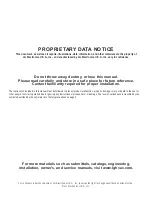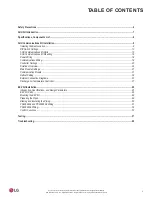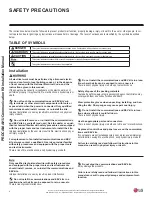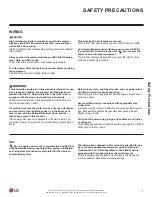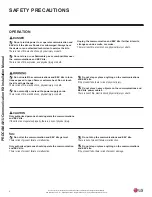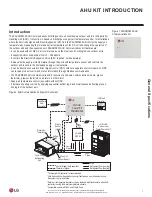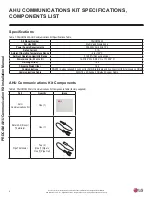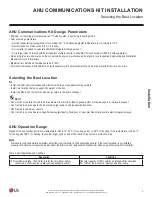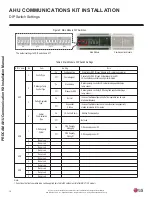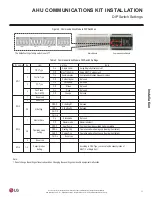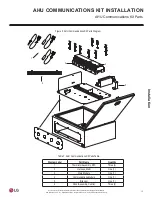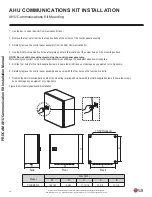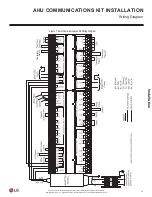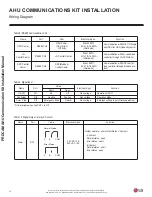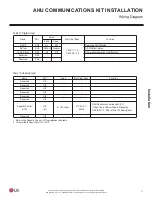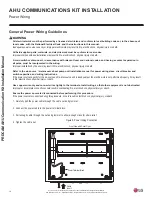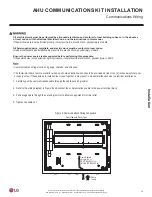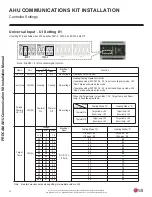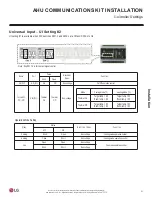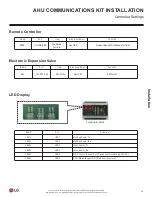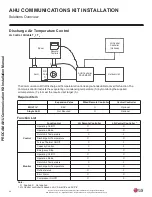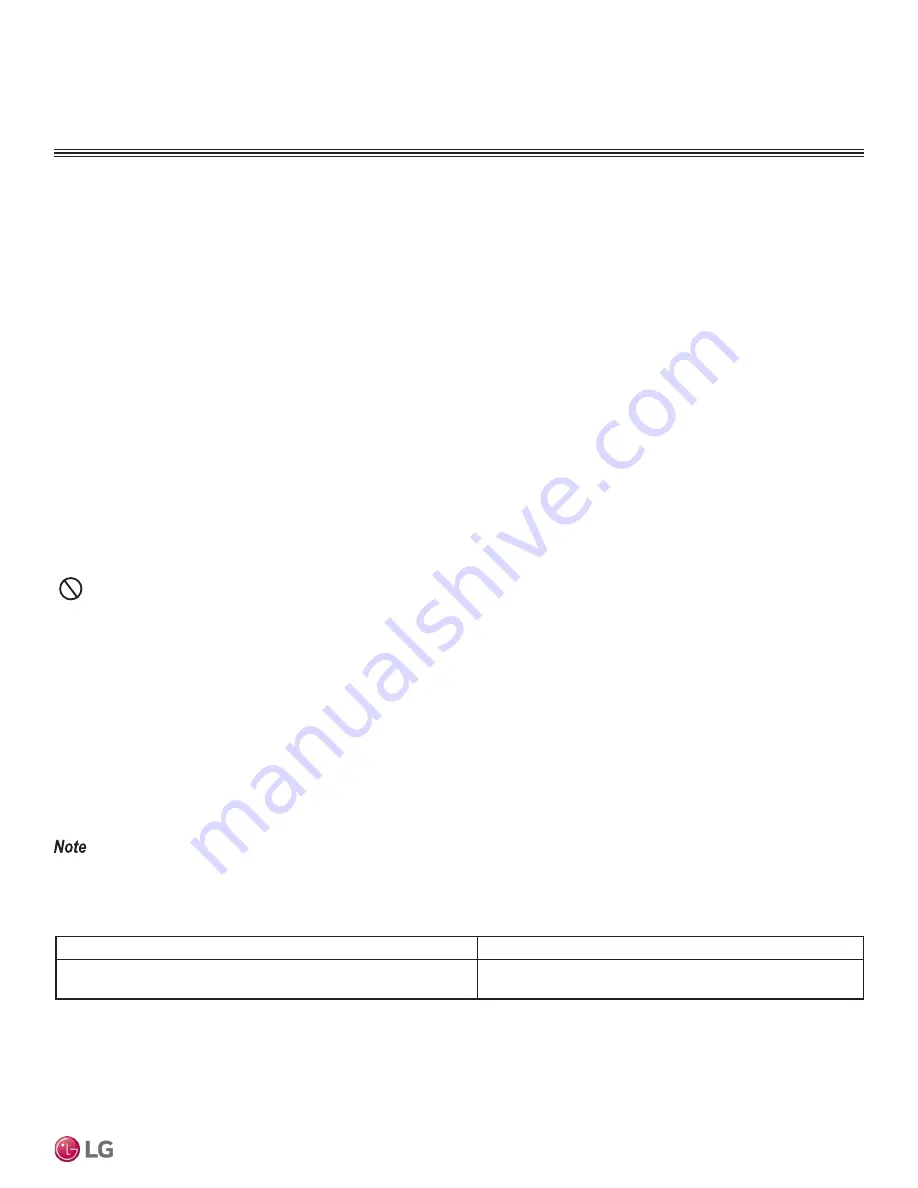
9
Installation
Due to our policy of continuous product innovation, some specifications may change without notification.
©LG Electronics U.S.A., Inc., Englewood Cliffs, NJ. All rights reserved. “LG” is a registered trademark of LG Corp.
AHU Communications Kit Design Parameters
• Minimum coil entering air temperature is 41°F when system is operating in heating mode.
• AHU coil sizing parameters:
• Suction (evaporating) temperature for coil sizing is 41°F, Condensing (liquid) temperature for coil sizing is 110°F.
• Recommended coil tube sizes: 3/8 or 1/2 inches.
• Coil volume is needed to calculate additional refrigerant charge amount.
• Coils larger than 16 tons should be divided into multiple circuits to allow EEV Kit connection kit (EEV Kit sold separately).
• Pipe sizing rules are same rules as the connected air-source or water-source heat pump (see respective Engineering and Installation
Manuals for more information).
• Maximum recommended combination ratio is 100%.
• AHU Communications Kits and EEV Kits (sold separately) are not weatherproof and must be protected from rain, snow, etc.
AHU COMMUNICATIONS KIT INSTALLATION
Selecting the Best Location
AHU Operation Range
Range of the heat exchanger inlet air temperature is 64.4 to 104°F for cooling, and 41 to 86°F for heating. If the temperature is <64.4°F
for cooling and >86°F for heating, the system might cycle on and off because of the system’s protection logic.
Application
Condition
100% outside air intake: The AHU(s) is (are) the only indoor unit(s)
connected to the air-source / water-source heat pump unit(s).
The total capacity of 100% outside air intake AHU(s) should be
50~100% of the air-source / water-source heat pump.
To measure room temperature accurately, install the room thermistor in the heat exchanger inlet� If the room thermistor is not installed
properly, the AHU may not operate properly. Room thermistor can be replaced with fixed resistor when using a third-party AHU controller.
Table 3: AHU Application and Condition.
Selecting the Best Location
Do
• Install the AHU Communications and EEV Kits with the access panels facing outward.
• Install in a location that can support the weight of the kits.
• Install the EEV kit on the AHU as close as possible to the heat exchanger.
Don’t
• Don’t install or operate the unit in an area where mineral oils, sulphuric gases, acidic or alkaline vapors or spray are present.
• Don’t install in an area where the air contains high levels of salt (oceanside locations).
• Don’t install in vehicles or vessels.
• Don’t install in an area where voltage fluctuates significantly (factories), or near machines that generate electromagnetic waves.


